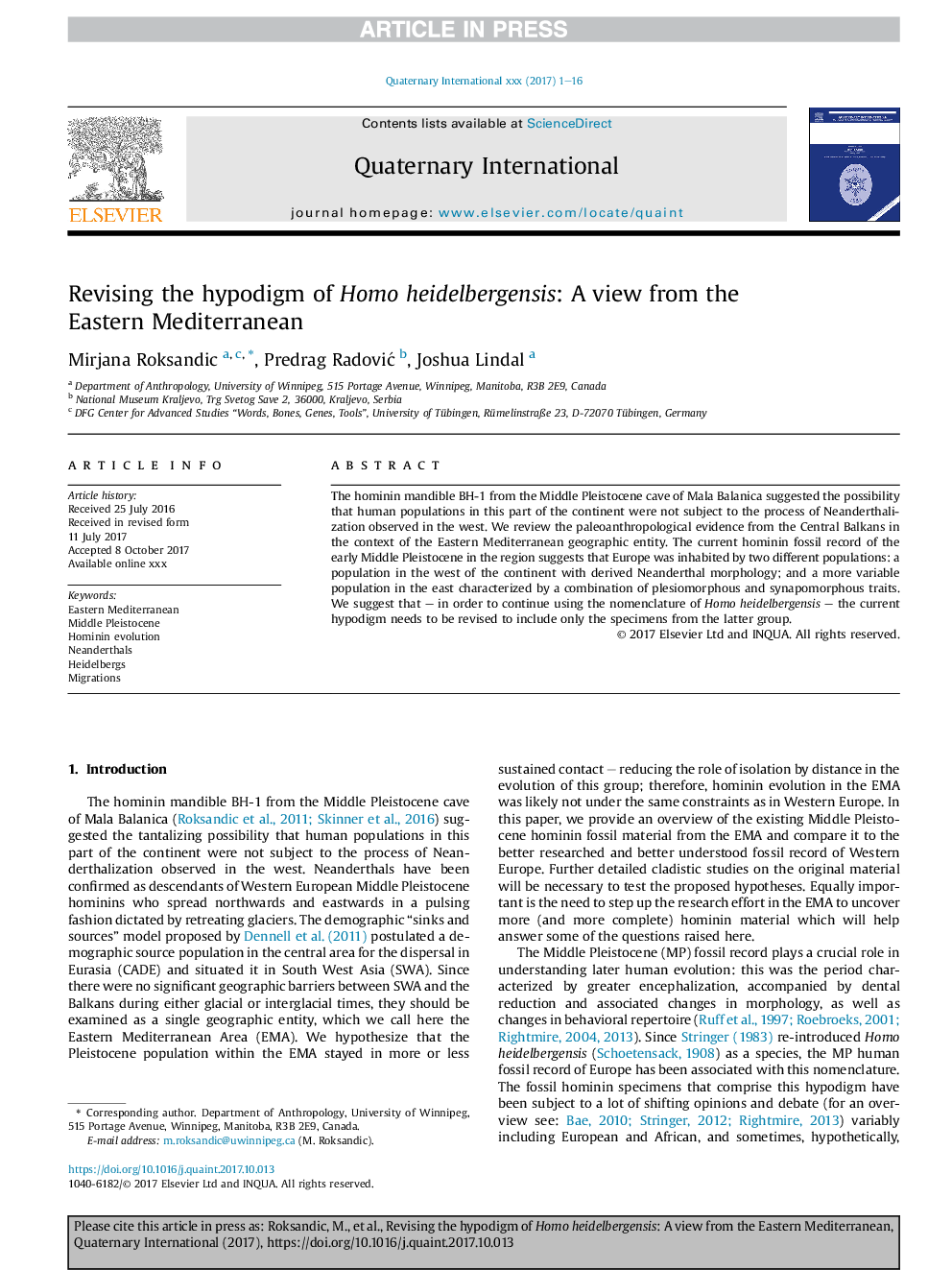| Article ID | Journal | Published Year | Pages | File Type |
|---|---|---|---|---|
| 7450722 | Quaternary International | 2018 | 16 Pages |
Abstract
The hominin mandible BH-1 from the Middle Pleistocene cave of Mala Balanica suggested the possibility that human populations in this part of the continent were not subject to the process of Neanderthalization observed in the west. We review the paleoanthropological evidence from the Central Balkans in the context of the Eastern Mediterranean geographic entity. The current hominin fossil record of the early Middle Pleistocene in the region suggests that Europe was inhabited by two different populations: a population in the west of the continent with derived Neanderthal morphology; and a more variable population in the east characterized by a combination of plesiomorphous and synapomorphous traits. We suggest that - in order to continue using the nomenclature of Homo heidelbergensis - the current hypodigm needs to be revised to include only the specimens from the latter group.
Related Topics
Physical Sciences and Engineering
Earth and Planetary Sciences
Geology
Authors
Mirjana Roksandic, Predrag RadoviÄ, Joshua Lindal,
